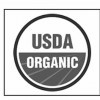Abstract
Organic farming can generally be described as a method of production that utilizes non-synthetic inputs and emphasizes biological and ecological process to improve soil quality, manage soil fertility, and optimize pest management. This revised 16-page fact sheet is written for commercial producers who are transitioning to or beginning organic production. Written by D.D. Treadwell and published by the UF Department of Horticultural Sciences, April 2014.
HS720/CV118: Introduction to Organic Crop Production (ufl.edu)
References
Altieri, M. A., C. I. Nicholls and M. A. Fritz. 2005. Manage Insects on Your Farm: A Guide to Ecological Strategies. Sustainable Agriculture Network, SARE. Beltsville, MD.
Caldwell, B., E. B. Rosen, E. Sideman, A. Shelton and C. Smart. 2005. Resource Guide for Organic Insect and Disease Management. Cornell University. New York State Agricultural Experiment Station, Geneva, NY. 169 pp.
Dimitri, C. and C. Green. 2003. Recent growth patterns in the U.S. foods market. Agriculture Information Bullentin No. AIB777. United States Department of Agriculture, Economic Research Service. 23 March 2006. http://www.ers.usda.gov/publications/aib7777/
Dimitri, C, and L. Oberholtzer. 2005. Market-Led Growth vs. Government-Facilitated Growth: Development of the U.S. and EU Organic Agricultural Sectors. USDA-ERS Outlook Report No. (WRS0505) pp. 26. August.
Florida Department of Agriculture and Consumer Services. 2005. Water quality/quantity best management practices for Florida vegetable and agronomic crops. Florida Department of Agriculture and Consumer Services, Office of Agricultural Water Policy. http://www.floridaagwaterpolicy.com/PDF/Bmps/Bmp_VeggieAgroCrops2005.pdf
Forman, J. and J. Silverstein. 2012. Organic Foods: Health and Environmental Advantages and Disadvantages. Pediatrics. 130 (5): E1406-E1415. https://doi.org/10.1542/peds.2012-2579
Lampkin, N. 1990. Organic Farming. Farming Press Books, Ipswich, UK. 701 pp.
Olson, S. and B. Santos (Eds.) 2012. Vegetable Production Handbook for Florida EDIS CV100: https://edis.ifas.ufl.edu/cv100
Organic Trade Association. 2011. U.S. Organic Industry Overview. Accessed June 19, 2013. http://www.ota.com/pics/documents/2011OrganicIndustrySurvey.pdf
Treadwell, D., S. Park Brown, J. Stephens and S. Webb. 2013. Organic Vegetable Gardening in Florida. EDIS HS1215 http://edis.ifas.ufl.edu/hs1215 https://doi.org/10.32473/edis-hs1215-2013
Simonne, A. and D. Treadwell. 2013. Minimizing Food Safety Hazards for Organic Growers. EDIS FCS8872. http://edis.ifas.ufl.edu/pdffiles/FY/FY106200.pdf
Smith-Spangler, C., M. Brandeau, G. Hunter, C. Bavinger, M. Pearson, P. Eschbach, V. Sundaram, H. Liu, P. Schirmer, C. Stave, I. Olkin, and D. Bravata. 2012. Are Organic Foods Safer or Healthier than Conventional Alternatives? Annals of Internal Medicine. 157:348-366. https://doi.org/10.7326/0003-4819-157-5-201209040-00007
Sullivan, P. 2001. Alternative Soil Amendments. NCAT ATTRA Publication #IP054. Accessed online 14 February. http://www.attra.org/attra-pub/altsoilamend.html
Swisher, M.E. and R. Koenig. 2005. The National Organic Standards: What Service Providers Need to Know. In Press (EDIS).
Treadwell, D.D., D.E. McKinney, N.G. Creamer.2003. From philosophy to science: A brief history of organic horticulture in the United States. HortScience. 38: 1009-1014. https://doi.org/10.21273/HORTSCI.38.5.1009
Treadwell, D.D., W. Klassen and M. Alligood. 2012a. Annual Cover Crops in Florida Vegetable Systems. Part I. Objectives: Why Grow Cover Crops? EDIS. http://edis.ifas.ufl.edu/HS387
Treadwell, D.D. W. Klassen and M. Alligood. 2012b. Annual Cover Crops in Florida Vegetable Systems. Part II. Production. http://edis.ifas.ufl.edu/HS389
Treadwell, D.D. W. Klassen, M. Alligood and S. Shewey. 2012c. Annual Cover Crops in Florida Vegetable Systems. Part III. Buying and Sourcing. http://edis.ifas.ufl.edu/HS390
[USDA ERS] United States Department of agriculture and Economic Research Service. 2006. Data sets: Organic production. Table 2. U.S. certified organic farmland Acreage, livestock numbers, and farm operations, 1992-2008. Accessed online 2 July 2013. http://www.ers.usda.gov/data-products/organic-production.aspx#25762
[USDA ERS] United States Department of agriculture and Economic Research Service. Organic Trade. Accessed online June 19, 2013 http://www.ers.usda.gov/topics/natural-resources-environment/organic-agriculture/organic-trade.aspx#.UdMt7PnVB1Y
Willer, H. and L. Kilcher (Eds.). 2011. The World of Organic Agriculture. Statistics and Emerging Trends 2011. International Federation of Organic Agriculture Movements (IFOAM), Bonn, Germany, and Research Institute of Organic Agriculture (FiBL), Frick, Switzerland.
Winter, C.K. and S.F. Davis. 2006. Scientific Status Summary: Organic Foods. J. Food Science 71(9): R117-R124. https://doi.org/10.1111/j.1750-3841.2006.00196.x
Zublena, J.P., J.V. Baird and J.P. Lilly. 1997. Soil Facts: Nutrient Content of Fertilizer and Organic Materials. North Carolina Cooperative Extension Service. Pub. # AG-439-18, Accessed online June 19, 2013. http://www.soil.ncsu.edu/publications/Soilfacts/AG-439-18/AG-439-18.pdf

